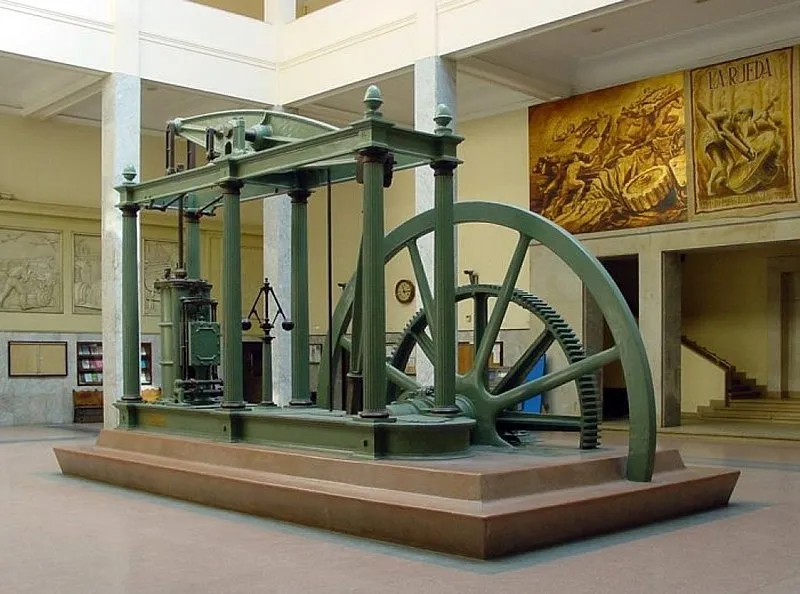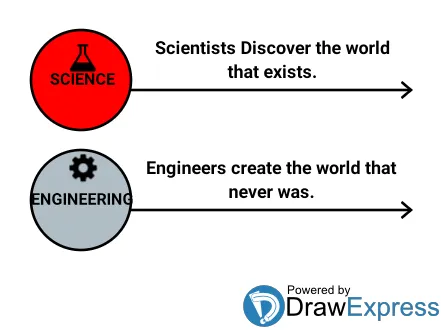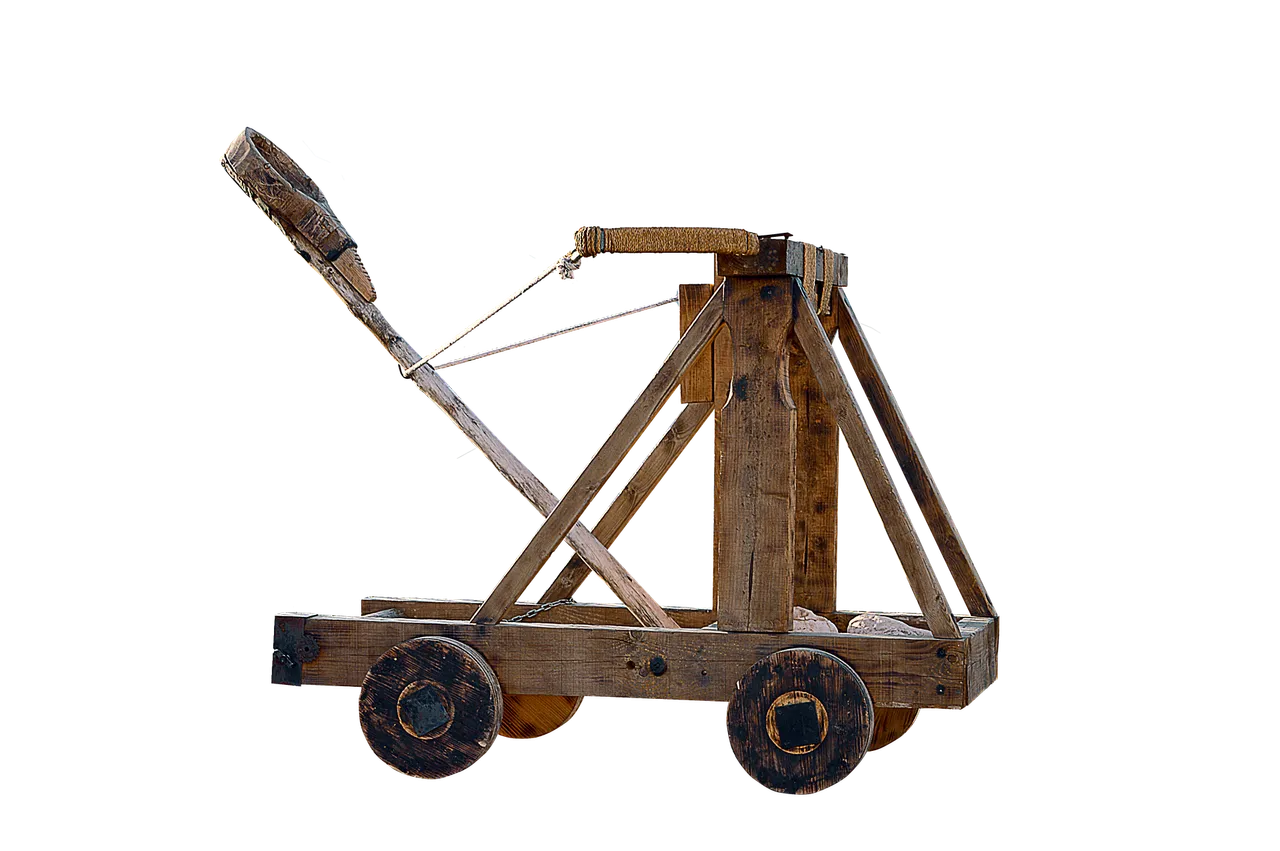If you are using the internet, then i'm very sure you have a smartphone or a computer, or have u ever thought of the comfort you felt when you cruise inside your Auto taking that good road on the way to your destination. Don't tell me you haven't board a plane before, and if not , you must have taken a train to that long destination which would have been hell if you had done that using your legs.
Do you have a house? Then i guess you might have also condition the air in your house using that electrical appliance called Air Condition (AC) and you even get your foods prepared using Electric Cookers. If my guess is right, then you have experienced the importance of Engineering.

A beam engine of the Watt type, built by D. Napier and Son (London) in 1859.
[image credit - Creative Commons]
[image credit - Creative Commons]
When we look around us, we see creations, both Natural and Artificial.
Naturally existing creations are believed to me made by God while Artificial creations are made by man. Scientists study the existence and behavior of these natural creations while some people apply this Scientific Knowledge to create new things that never existed and solve problems of human kind.

Image created by @ayobaba
Due to their creativity, they are seen as CREATOR, because of their native ingenuity, application of Scientific Principles and Mathematical knowledge, they are referred to as ENGINEER and what they practice is called ENGINEERING.
WHAT IS ENGINEERING ?
The word Engineering come from a Latin word Ingenium which means Cleverness and Ingeniar which means to Devise, Design or Contrive.
Engineering can be simply defined as the application of common sense, native ingenuity, scientific principles and mathematical knowledge to solve the problem of man – kind.
RELATIONSHIP BETWEEN SCIENCE AND ENGINEERING

Image created by @ayobaba
Engineering may be seen as a kind of science. This is not wrong but it will make more sense if we take Science as a tool used in Engineering. Science can be defined as a set of knowledge which has been established and accumulated with reference to truth and fact that has been discovered about nature and the universe.The function of science is to Test, Know, Verify, set principles and Explain the physical world WHILE Engineering apply this knowledge, Verifications and principles in addition with Mathematical knowledge to create new things and solve problems of mankind.
According to Theodore Von Karma, Scientist discover the world that exists, Engineers create the world that never was.
HISTORY OF ENGINEERING
Engineering has been in existence since the time when human start thinking of how to solve some of their problems by inventing systems like Lever, Wedge, Wheel and Pulley.
In the ancient era, Engineering originally refers specifically to Military Engineering which deals with the design and building of military works along with ways of communicating and Transporting people and things. As far back as 1390 when Engineering is derived from the word Engineer which literarily mean the designer, constructor and operators of military engines, Engines itself is given the Latin meaning “Result of Clever invention” as far back as 1250.

Military catapult [image credit - Pixabay
One of the significant inventions of military Engineering is the mechanical device called Catapult which is used for war. This was used by the Babylonians and Assyrians in the 11th century BCE.
As time passes, the design and constructions of structures for the civilian became very important. This brought about the need to differentiate between Military Engineers and Non – Military Engineers. This marks the beginning of Civil Engineering which is somehow related to Military Engineering but the difference is that Civil Engineers construct for civilian use while Military Engineers construct for the Military.
MAIN BRANCHES OF ENGINEERING
Traditionally, Engineering is divided into four major branches namely;
Civil Engineering
Mechanical Engineering
Electrical Engineering
Chemical Engineering
Other branches of Engineering can be taken as sub – branches of the named four.
Civil Engineering

[image credit - Pixabay
[image credit - Pixabay
Civil Engineering is a branch of Engineering that deals with the analysis, design, planning, construction, supervision and maintenance of both public and private works and infrastructure such as construction of roads, bridges, railways, tunnels, dams, tall buildings and sky scrapers among many others.
Mechanical Engineering

[image credit - Pixabay
[image credit - Pixabay
Mechanical Engineering deals with the design and manufacture of machinery and mechanical systems such as Engines and Robots.
Electrical Engineering

[image credit - Pixabay
[image credit - Pixabay
Electrical Engineering deals with the design, Evaluation and manufacture of electrical and electronic systems such as Electric Circuit, Electronic Circuit, Electric Motors, Generators, Instrumentation, Control, Computer Systems etc.
Chemical Engineering

[image credit - Pixabay
[image credit - Pixabay
Chemical engineering deals with the use of theories and principles of physics, chemistry, biology, and engineering in order to carry out chemical processes on a large and commercial scale, such as the production of Speciality and commodity chemicals , petroleum refining, microfabrication and biomolecule production .
Some other branches of Engineering are ;
- Computer Engineering
- Agricultural Engineering
- Bio- resources Engineering
- Mechatronics Engineering
- Petrochemical Engineering
- Mining Engineering
- Aeronautical Engineering
- Structural Engineering
- Geotechnical Engineering
- Environmental Engineering
- Transportation Engineering
- Bridge Engineering and many others.
FUNCTIONS OF ENGINEERING
Engineering functions can be arranged based on the stages involved in the creations of Engineering works as follows ;
Research
In Engineering, research is done in order to find out new Principles and Methods. Research is also carried out on existing principles and methods in order to ensure validation. In order for this to be successful, Mathematical knowledge, scientific knowledge, experimental techniques and native reasoning is required.
Development
After research is completed and result is collected, Tested and Validated, Engineers use these validated results to develop new principles, standards, methods and procedures which can be use for inventions that never existed.
Design
When Engineers are ready to bring this new Idea into existence, Design is done following the newly developed Principles, Standards, Methods and Procedures in order to create features (Dimensions, Shapes, Material SpecificationsTechnical Specifications etc.) that would be used in Construction.
Construction
After the Design is fully completed and all the necessary feature has been acquired, then the construction Engineer commenced with construction using the design. The construction engineer is the one responsible for preparation of construction site, acquisition of materials and equipment, and coordination of both equipment and personnel.
Production
Production is more or less like construction, the major difference is that construction deals with the building of a structure (Building, Road, Bridge etc.) as a whole WHILE Production deals with building of an object in bulk, for example, production of automobiles. Production Engineers are the one responsible for the selection and arrangement of machines, equipment and personnel. with consideration of human and economic factors. He is responsible for the selection of processes and tools, he also integrates the movement of materials and components, and provides them for testing and inspection.
Operation
It is the responsibility of the operating engineer to control machines, plants, and sectors providing power, transportation, and communication. He plans the step by step procedures and oversee the supervision of personnel to obtain reliable and economic operation of complex equipment.
Management
Management is very important in Engineering in order to ensure proper coordination of all other aspects so as to achieve the planned output as scheduled.
FOUR MAJOR OBJECTIVES OF ENGINEERING TO THE SOCIETY (FSAE)
When Engineering works are created, they must be able to fulfil four major objectives in the society as mentioned below ;
1. Functionality
2. Safety
3. Aesthetic
4. Economy
Functionality
When an Engineering work is created, it must be functional in the sense that it should be able to fulfill the purpose for which it has been created.
Instance : A bridge constructed by Civil Engineers must be able to serve the purpose of transportation over water or other existing roads.
Safety
An Engineering work should not only be functional, but at the sametime it must be safe and confinient for the people using it and for the society as a whole.
Instance : During its functional service, the bridge must not collapse or cause visual discomfort to its user.
Aesthetic
While an Engineering work is Functional and safe, it must also be good looking and attractive.
Instance : The bridge can also serve as decoration and even a tourist center in the society.
Economy
The cost required for the construction, maintanance and consumption of an Engineering work must not be too expensive.